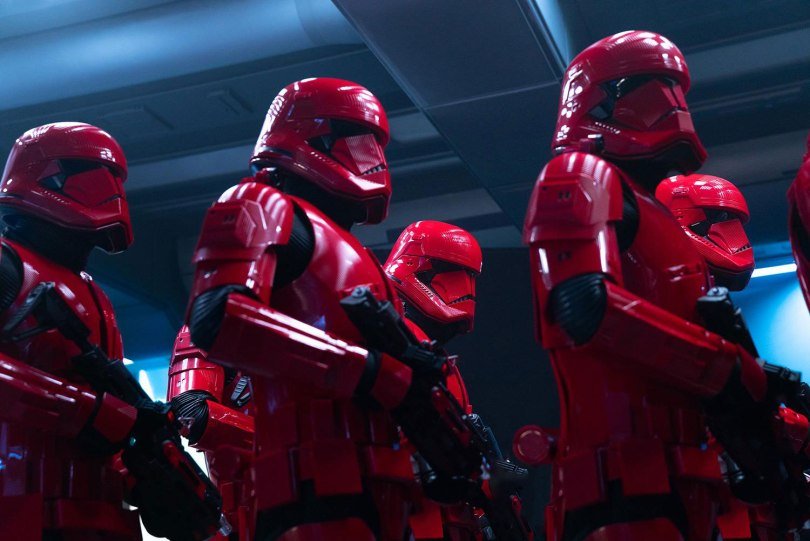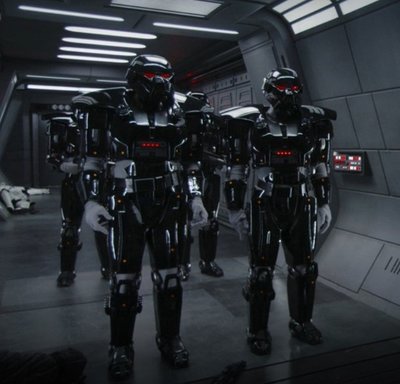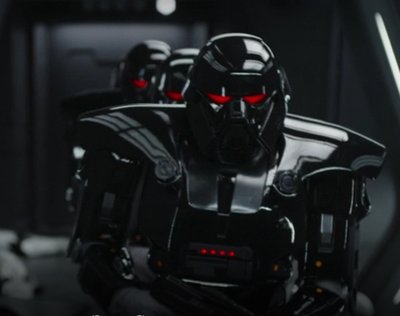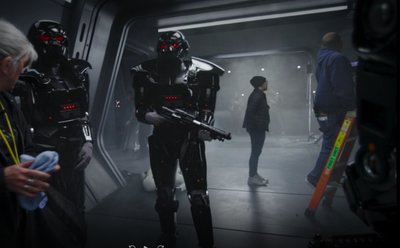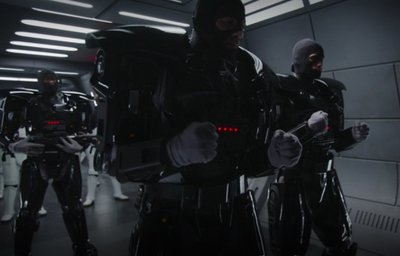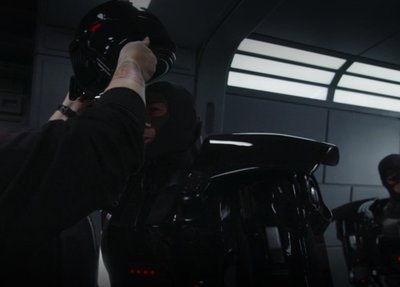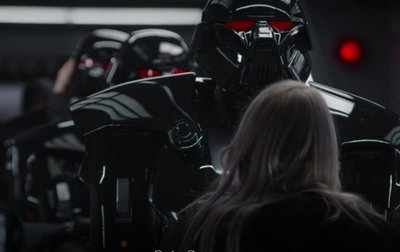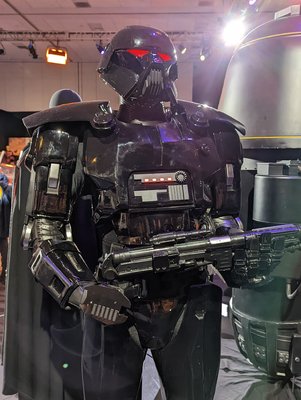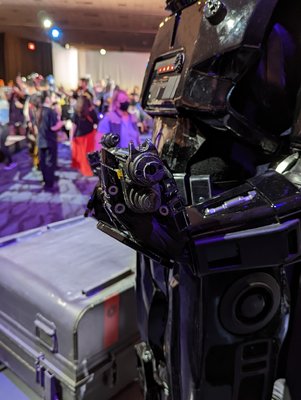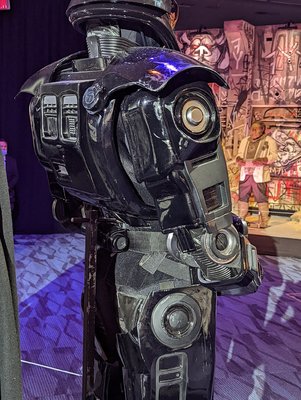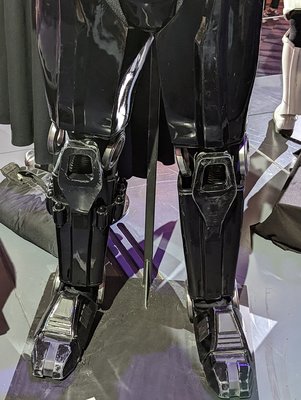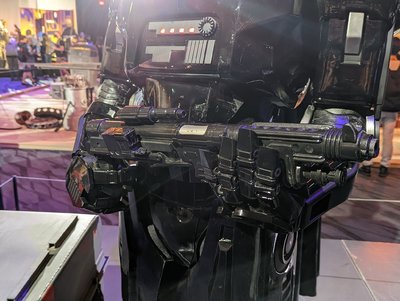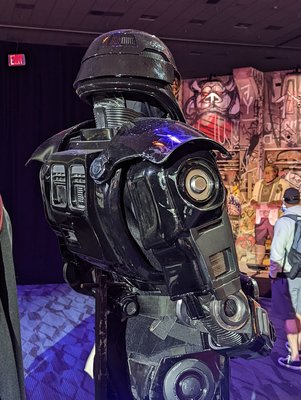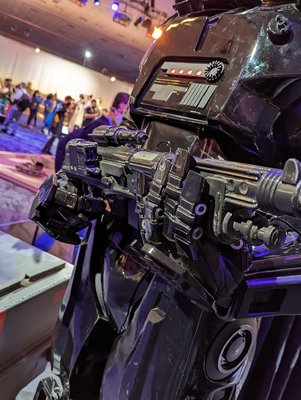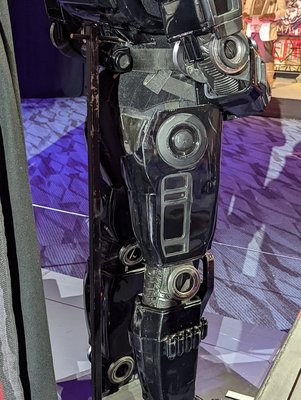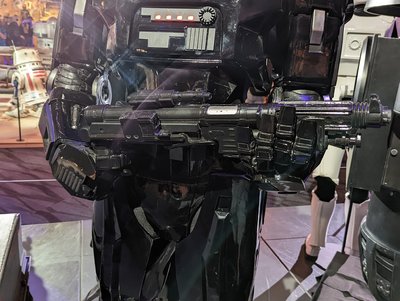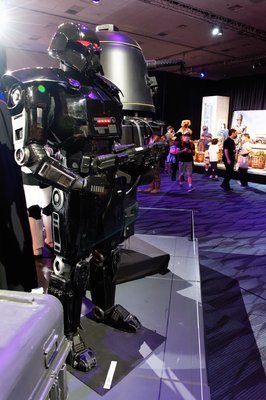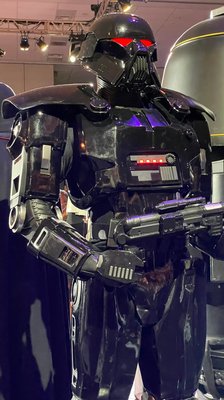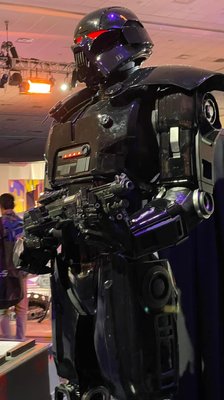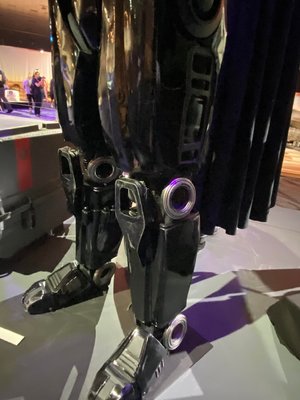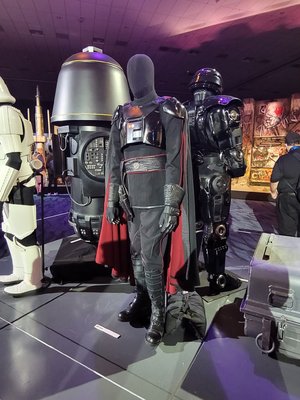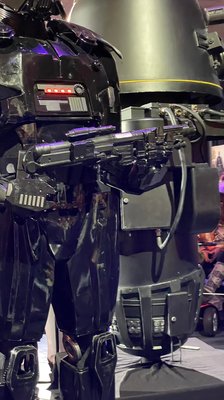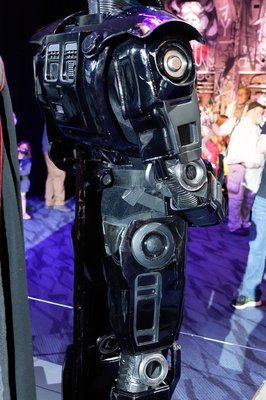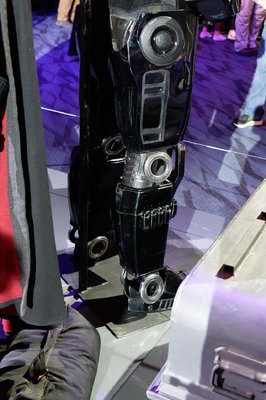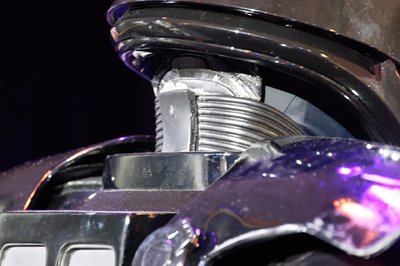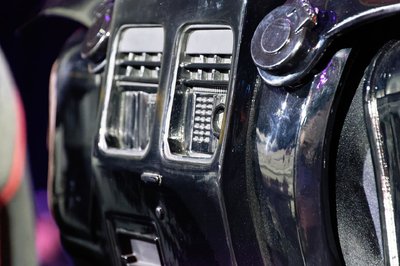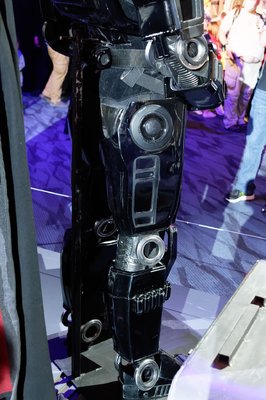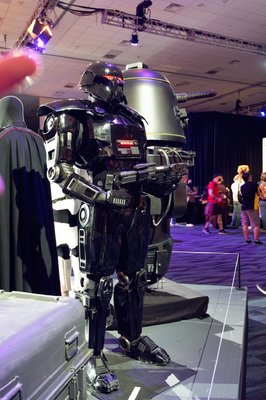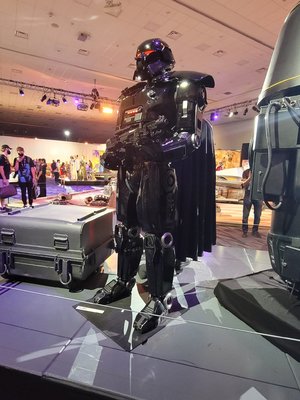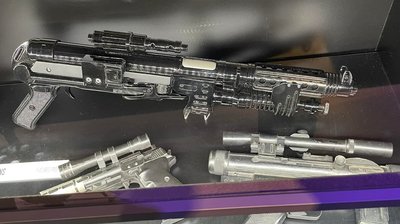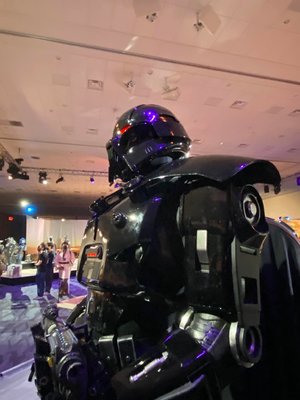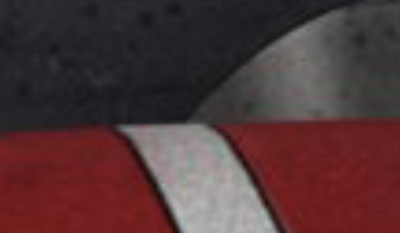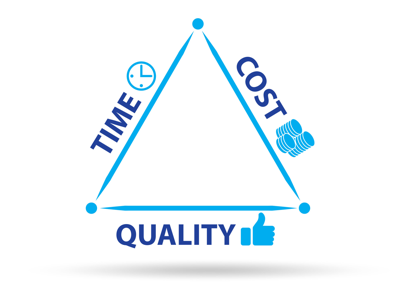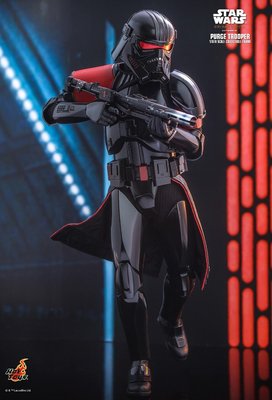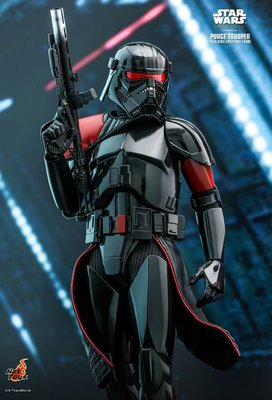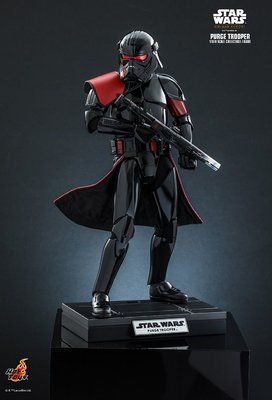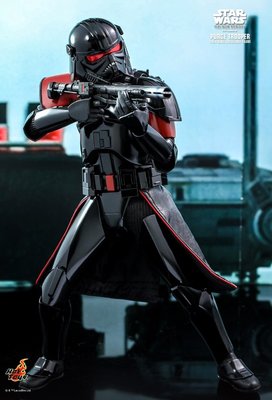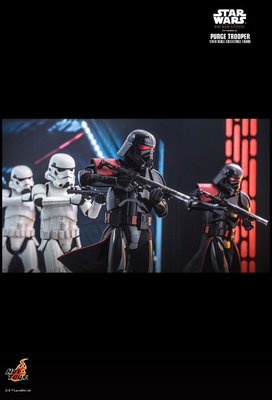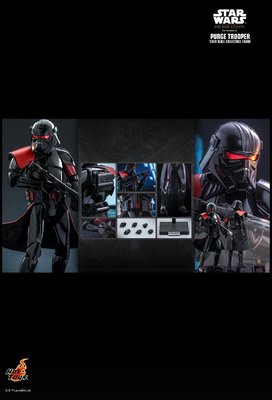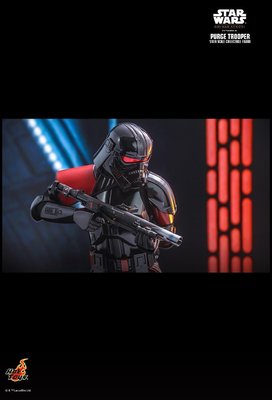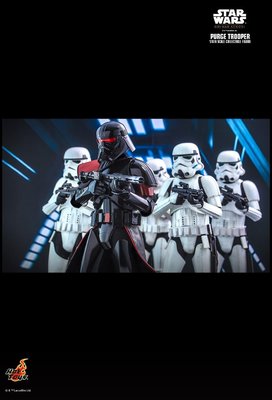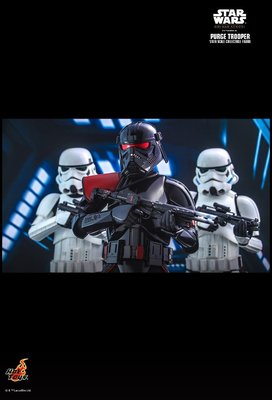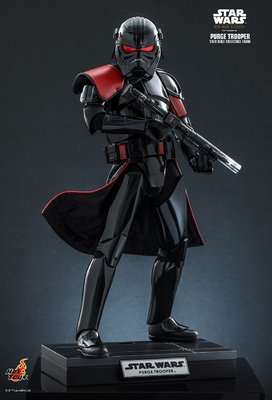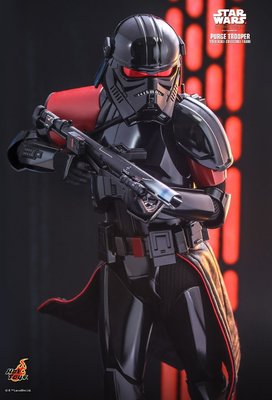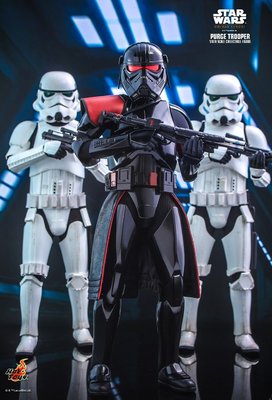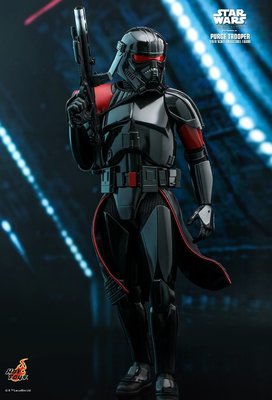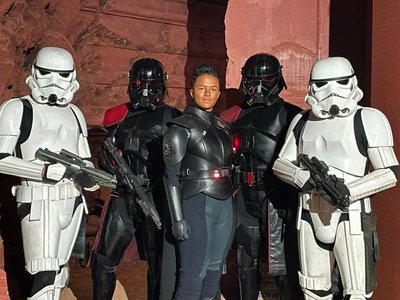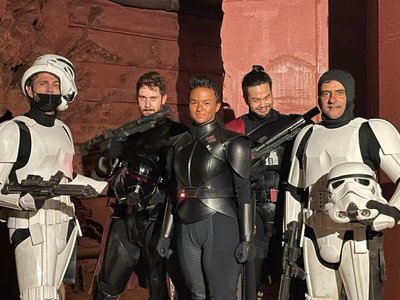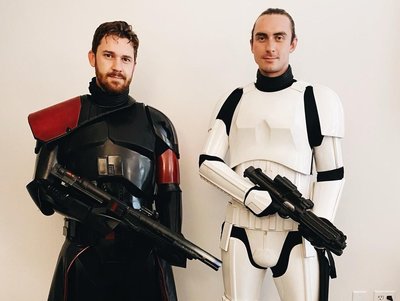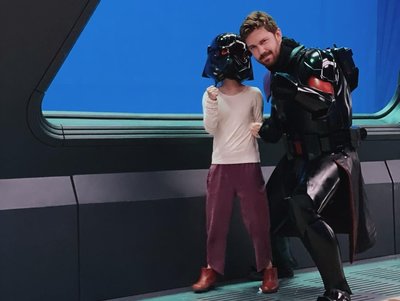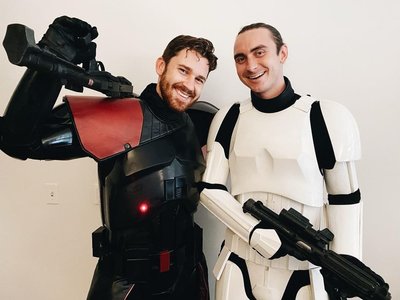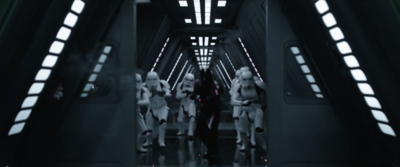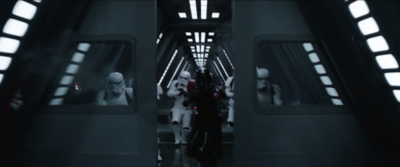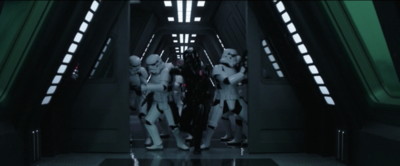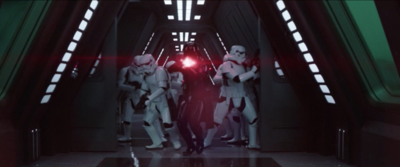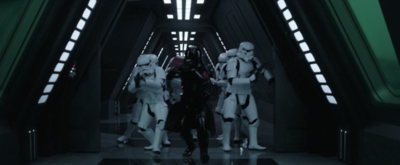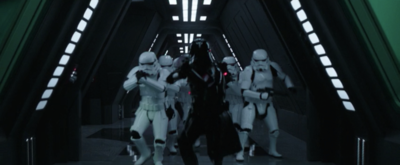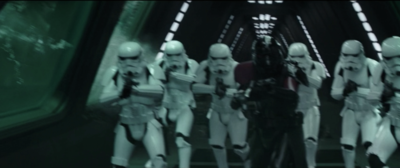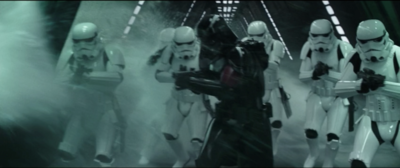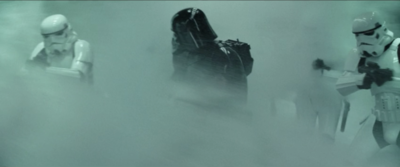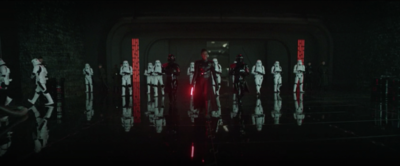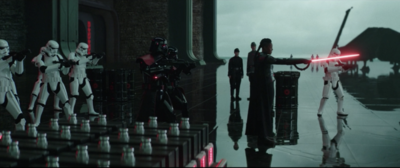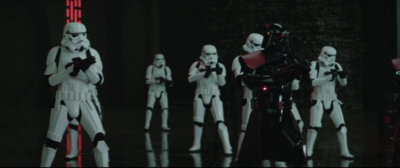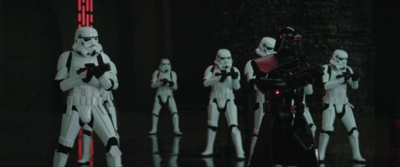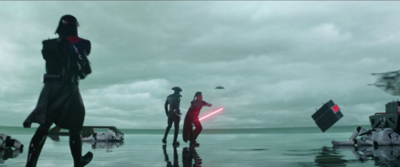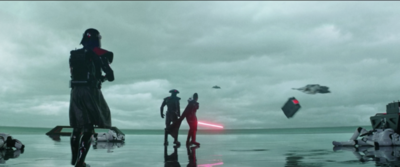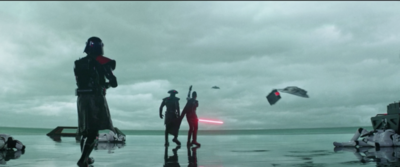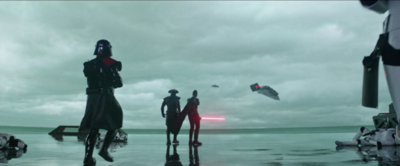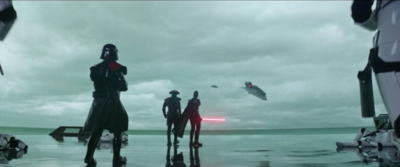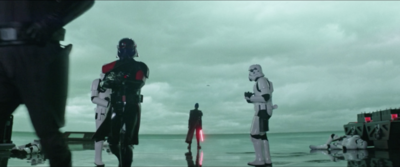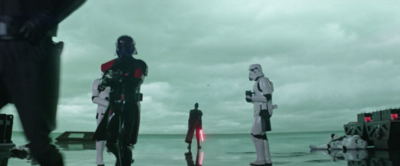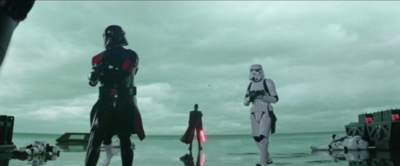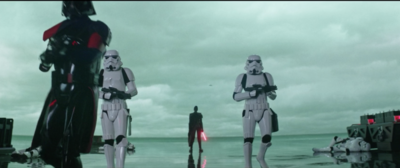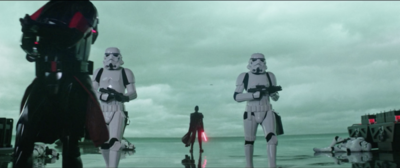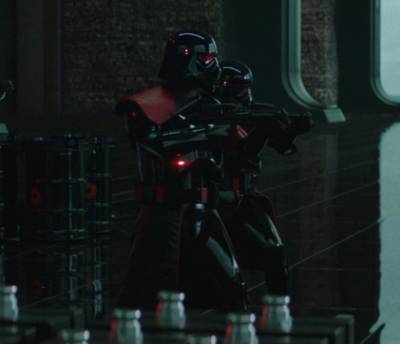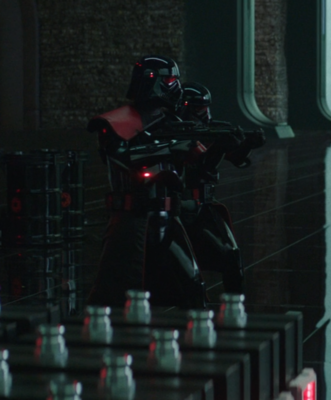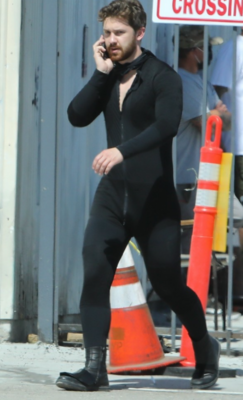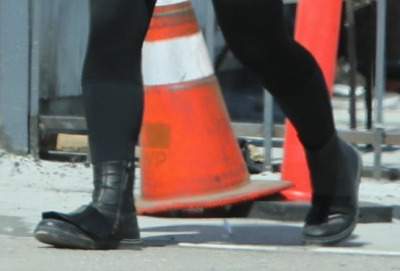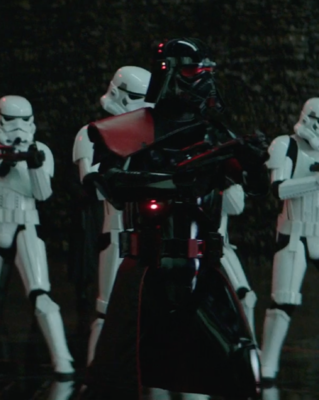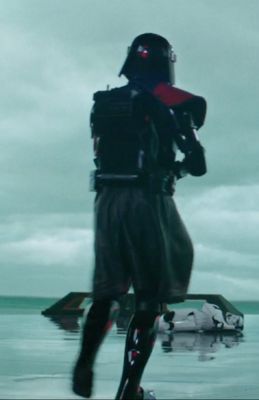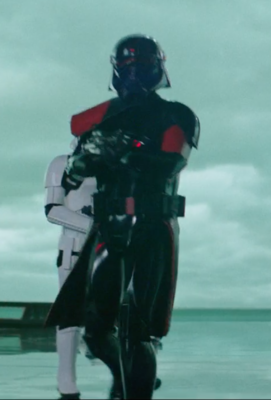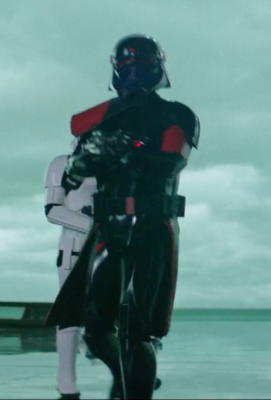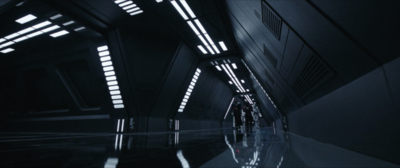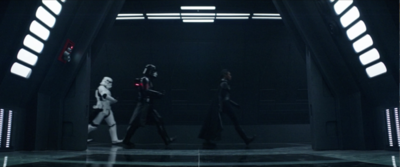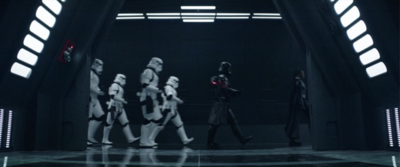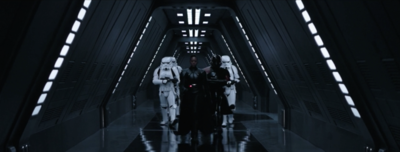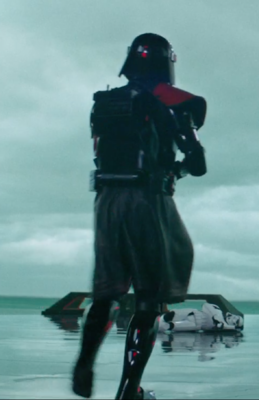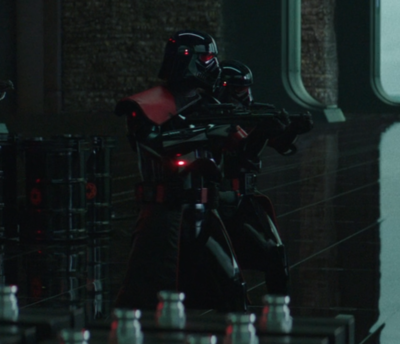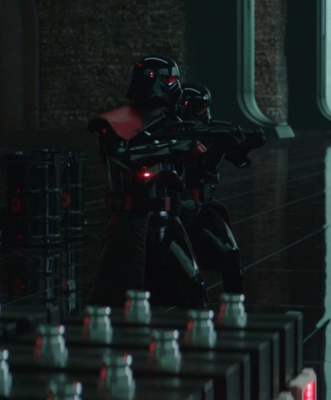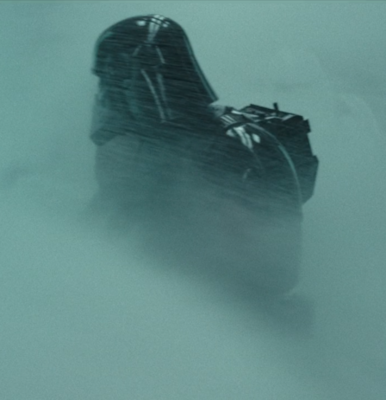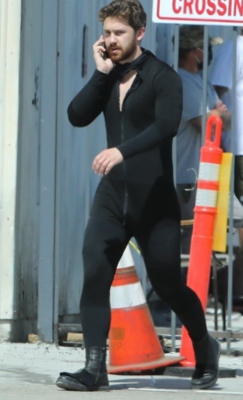-
Posts
2,238 -
Joined
-
Last visited
-
Days Won
155
Content Type
Profiles
Forums
Events
Everything posted by nanotek
-
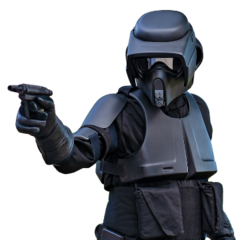
Imperial Super Commando - Gar Saxon animated costume
nanotek replied to MisterxM's topic in Gar Saxon (Rebels - Animated)
To start we review our reference materials we have collected so far to see if we have enough to be able to cover the costume At first glance we look a little little light? -
As far as I know there was discussion about it and an informal decision made that it was not a costume as some parts were CGI. I'm more than happy to raise it through the new process, however we would need evidence to support the application. I remembered a lot of people posting pics of the display at Celebration this year, if we can get as many high quality pics from different angles we might be able to make a better case.
-

Imperial Super Commando - Gar Saxon animated costume
nanotek replied to MisterxM's topic in Gar Saxon (Rebels - Animated)
@RAIDER more than happy with the approach I am happy if people wanna get started although I think it might be worthwhile seeing what @IcyTrooper has already drafted so we don't have to reinvent the wheel! I'll leave it up to you guys! -
What is the width of the boxes? They do seem rather large in comparison
-

Imperial Super Commando - Gar Saxon animated costume
nanotek replied to MisterxM's topic in Gar Saxon (Rebels - Animated)
So you are talking about this detail here: When I zoom in as far as I can, I cannot see any indented/raised areas. From what I can see the only thing that fits that description is the buttons as you said. Bearing in mind that the colour red bleeds, I cannot see any raised or recessed areas for this part. -
Looks great!
-
If it helps @bluebantha I am 6'1" and went with 3D printed armour and I definitely did not have contaminate free workspaces when working on it The complexity of this costume is definitely a reason why the costume is more expensive and time consuming and it's really up to you which path you're going to take. I wrote a pretty good explanation of the different options here: As with all projects the "Scope Triangle" applies where time, quality and cost will always have an impact on what you are trying to achieve (scope): Have a think about what is important to you and see how you can balance out your build
-

Imperial Super Commando - Gar Saxon animated costume
nanotek replied to MisterxM's topic in Gar Saxon (Rebels - Animated)
Which part needs to be fixed in the model? From what I can see it's just paint/markings that look different or am I missing something? [edit] I think I see now, the model has ridges where it appears the on-screen versions the lines are painted. Are there any high quality large format pics we can look? -
@javi sanchez I'm so sorry that this has happened there is nothing worse than having to start again. I tried hunting for how @thisiskevin assembled his bandolier and couldn't find anything so I had to go by what the CRL pic shows. Without Kevin's input on hand, It appears that he has cut the 5cm wide strap down to 3cm wide to fit the slots on the back of the boxes and connected it by sewing it to the 5cm wide strapping at the shoulders and waist. I hope this makes sense! It would be great if you document this process so we can reference it to the files for others to build!
-

BlueBantha Shadowtrooper "Final Photos"
nanotek replied to bluebantha's topic in Shadow Stormtrooper
I have PM'd you -

BlueBantha Shadowtrooper "Final Photos"
nanotek replied to bluebantha's topic in Shadow Stormtrooper
@bluebantha I cannot see why you would not be approved for this costume. Please allow us to reach out to your GML, I have sent you a PM to confirm. Thanks -
Awesome, will be great to have you onboard!
-
Sorry to hear about this, really terrible news. I hope this gets sorted
-

Purge Trooper (Phase II) - Kenobi - References
nanotek replied to nanotek's topic in Purge Trooper Phase II (Kenobi)
-

Purge Trooper (Phase II) - Kenobi - References
nanotek replied to nanotek's topic in Purge Trooper Phase II (Kenobi)
-

Purge Trooper (Phase II) - Kenobi - Discussion
nanotek replied to nanotek's topic in Purge Trooper Phase II (Kenobi)
Yep I am a member, however if there is any CRL development it has to be done via forums. If there are references missing from here please feel free to add them here -

Purge Trooper (Phase II) - Kenobi - Discussion
nanotek replied to nanotek's topic in Purge Trooper Phase II (Kenobi)
Source on these two pics? I'm just wondering if I can get the originals in higher quality -
Recently the TV Show Kenobi showed an new version of the Purge Trooper (Phase II) which has some clone parts, but also has some differences from the original Purge Trooper from Jedi Fallen Order: Helmet - seems to be a combination of many different helmet styles Backpack - new Shoulder armor - I see some variation from the standard clone shoulder armor E-11D blaster - Weapon of the Death Trooper Boot Spats - new Also given that the Clones have essentially been phased out during this time period in Star Wars lore, it could be argued that the character is not a clone but a stormtrooper with improved armor. Lets start a discussion on what makes this costume Spec Ops! ------------------------------------------ This will be the main listing and we'll tackle each part piece by piece (green is done, yellow is WIP, and red is not finalized): Helmet Neck Seal Under Suit Pauldron Shoulder Armor Upper Arm Armor Elbow Armor Forearm Armor Hand Plates Gloves Chest Armor Back Armor Backpack Radio Abdomen Armor Cod Armor Posterior Armor Belt Thermal Detonator Kama Thigh Armor Knee Armor Lower Leg Armor Boot Armor Boots E-11 Blaster E-11D Blaster Description: Purge Trooper Phase II Prefix: TX Detachment: Spec Ops Detachment Context: Star Wars: Kenobi (TV Series) These specialized troopers operated under direction of the Imperial Inquisitors they were assigned to. Within their assignments they either lead other Imperial units in eliminating discovered Jedi or guarded locations such as the Fortress Inquisitorius on Nur. Purge Troopers were highly trained in utilizing various types of blasters and melee weapons. Special Notes: The armor parts shall be made from one of these (or similar) types of materials: Fiberglass ABS (Acrylonitrile Butadiene Styrene) HIPS (High Impact Polystyrene) PLA, ABS, PETG (3D Printing) Polyurethane Rubber Blasters are not required for legion membership per our weapons policy 3D Printed parts are permitted but all print lines and other artifacts must be removed. Helmet Painted gloss black. Lens must be sufficiently dark enough to obscure the costumer's eyes. The eye lens is one continuous piece with a mirrored red tint. The central vocoder (chin detail) may be molded as a separate piece and is inserted into a recess in the mouth plate or it may be molded as a part of the mouth plate, but with a prominent recessed outline to create the appearance of being separate. The top part of the vocoder is rectangular in shape, with two clipped dog ears on the top corners. A smaller plate of identical shape sits on the top of this panel, leaving a narrow margin around each edge. There is also an angular cut out at the top of the right edge of this plate. A second rectangular plate sits on the top of the first, covering approximately 40% of bottom of the lower plate. There is a raised horizontal line on the lower left side of this top plate. There is a small square recess underneath this raised horizontal line. The main body of the vocoder sits below the panel described above. 9 raised ridges run vertically across the vocoder. Angled wings at the top of either side of the vocoder ridges, each slightly under approximately 50% of the length of these ridges. These wings angle down to the rest on top of the main mouth plate. Square profile side tusks run back from the lower edges of this front plate. Recessed rectangular metallic silver screens are inset into the greeblie in the front of each side tusk. Each greeblie has a raised ridge on 3 sides, angling up from the bottom side of the greeblie. 6 pill shapped symmetrical recessed stripes on each tusk, with the bottom of the recesses filled with red to match the pauldron, belt accessories and left bicep armor. A small raised horizontal rectangle with a recessed line is located below the vocoder. The frown must have 10 raised teeth, with angled recesses painted silver. There is a silver rectangular plate on the nose, between the teeth and the front plate, with a silver half moon greeble on top. This plate is recessed below the angled face plates on either side. The half moon greeble is level with the adjacent face plates. There is symmetrical recesses with a pill shaped greeblie on each side between the side tubes and the cheeks. The top of the greeblies are split in half with the top half being flat and the bottom half having 4 raised ridges that are level with the flat half. There are sharp angular cheekbones sculpted into helmet face plate running in a triangular shape below the lens opening. There are 3 raised ridges that run from the center of the brow, over the top of the helmet and down to the rear center of the helmet skirt. The central ridge is approximately 2.5 times wider than the ridges to either side of it. A winged greeblie sits below the center of the brow ridge and above the eye lens. The top of the helmet is separated from the face plate by a horizontal band running above the brow. A groove separates the top of the helmet and the rear skirt, running across the back of the helmet, meeting the brow band on either side. The side greebles (communicators/range finders) are attached on top of the joints between the band and the ridge on either side of the helmet. Symmetrical rectangular greebles (communicators/range finders) with semi-circular ridges underneath, present at the back of each side of the brow band, situated on top of the point where the front band meets the rear groove. The greeblie contains two raised and stacked squares, each with a circular LED or sculpted imitation located near the front, and a single recessed line in the shape of a square outlining the back two thirds of the greeble. If LEDs are used, the top LED must be a warm pale yellow (similar to a warm incandescent bulb) and the bottom LED must be red. There are 2 small pill shaped double indentation in the bottom corners of the faceplate, under each ear. The rear indentation is vertical and slightly longer than the front indentation that angles toward the front of the helmet. OPTIONAL Level two certification (if applicable): The central vocoder (chin detail) shall be molded as a separate piece and is inserted into a recess in the mouth plate. The aforementioned greeblie on the back of each side of the brow band must have the top and bottom lit using LEDs. The top LED must be a warm pale yellow (similar to a warm incandescent bulb), the bottom LED must be red. Neck Seal Black with horizontal ribs, fitted to the wearer, and extending from the base of the neck to conceal the entire neck. A bib may extend from the bottom of the neck seal to ensure that the entire neck opening of the chest and back armor is covered. The bib shall be made from the same ribbing material as used on the undersuit. Under Suit Base undersuit is made from a black, non-textured material, either one or two-piece construction with no visible logos/designs. Any zippers must not be visible when the full costume is worn. Ribbing material must be present anywhere the undersuit is visible when armor is worn on top. All ribbing must be horizontal. Each rib and groove can be no wider than 1/8 inch (3.175mm) (one rib and one groove equal 1/4 inch (6.35mm)). OPTIONAL Level two certification (if applicable): The undersuit is one piece construction. A zipper runs along the entire front and encloses the front of the undersuit. This should not be visible when the full costume is worn. Non-visible areas of undersuit (e.g., forearms, center of thighs, waist and calves) do not have ribbed material present. Pauldron Must be red in color and made from vinyl, leather or leather-like material. The pauldron differs from a standard pauldron in that the edges nearest the shoulder are cut at a 45 degree angle. There will be a black edge at the red area of the pauldron. The red area of the pauldron is made from the same material as the rest of the pauldron. There are 6-7 sections that are stitched around the neck of the wearer before the red area of the pauldron. Any stitching is black. There is an elastic strap that runs under the bicep and is attached to the pauldron with 2 black snaps. The strap is approximately 1/2 inch (12.7mm) wide. The strap is attached underneath the pauldron, not over it. The pauldron opens and closes via one opening in the back with an overlapping closure to give the appearance of a singular piece. There is no visible method of the closure method. OPTIONAL Level two certification (if applicable): There are 7 sections that are stitched around the neck of the wearer before the red area of the pauldron. Shoulder Armor Painted gloss black. The shoulder bells are considered effectively symmetrical; they may be worn interchangeably on the left and right shoulders. The top center is recessed between the two ridges and runs from the top of the shoulder to the bicep and notches into the lower rectangular area. A raised ridge runs along the bottom along the center recessed area and onto each of the two ridges There is a black 1 inch (25.4mm) strap that attaches shoulder armor to shoulder straps from chest and back armor. OPTIONAL Level two certification (if applicable): Shoulder bells are padded to give the armor the appearance of being elevated off of the bicep armor. There is a webbed strap that runs down and connects bicep armor to shoulder armor. Upper Arm Armor Right upper arm armor is painted gloss black. Left upper arm armor is painted gloss red. Upper arm armor must sit underneath the shoulder armor. There is a dimple on the lower area of the back of the arm. The outside of the bicep has a hard line edge at the front that turns in. The inside of the upper arm is rounded. There is a small vertical seam line on the inside and on the outside rear of the armor. Elbow Armor Painted gloss black. Armor has two parallel dashed detail slots on each outside edge of the elbow at the strap connection. Each elbow armor piece has a black rubber or rubber-like strap that is attached to the inner end of the armor and wraps around where the wearer's elbow bends. Each strap has a raised detail line at the top and bottom of the strap. OPTIONAL Level two certification (if applicable): The inside of the armor is padded to slightly elevate the armor off of the elbow of the wearer. Forearm Armor Painted gloss black. Armor is a two-piece design with a top and bottom. Armor is joined together with visible seams on both sides Both left and right forearms are mirror images of each other. Right forearm has a compad with 8 small buttons and 1 large main button. A second slightly smaller rectangular button sits centered on the main compad. The compad placement is closer to the bend in the wearer's elbow rather than by the wrist. Compad placement matches reference photos. Forearm tops have a flattened triangular area with a ridge that comes to a point at the top center of the forearm. Hand Plates Painted gloss black. Hand plates are mirror images of each other. Hand plates have a top curving ridge just past the knuckles of the hand. Hand plates turn down in a triangular shape that point towards the base of the thumb. Gloves Black in color, made of Nomex, leather, or leather-like material, with no visible straps or logos/designs. The fingers are enclosed, non-textured. The palm, thumb and forefinger are black leather or leather-like. Cuff is made from black elastic or elastic type of material. Extends underneath the forearm armor. The hand plates are attached to the back of each glove with no visible method of attachment. OPTIONAL Level two certification (if applicable): There is a curved cut out in the forefinger leather. The palms have 5 raised padded sections that match the reference photos. Chest Armor Painted gloss black. The positioning descriptions with reference to left and right are as if you are a looking at the armor from the front. Two raised rectangles aligned vertically in center of armor. The left rectangle has small raised line along outside edge. The right rectangle extends slightly above the left rectangle and has a small notch shape on right edge and 4 small horizontal rectangles on the lower left corner. Raised 4 sided greeblie is located on the lower left side of the armor with a raised circle that has a round red lens on top and a raised vertical rectangle below the lens. The lens may be painted to give the effect it is lit or it may be electronically lit producing a steady, non-blinking, light that is red in color. Two raised vertical rectangles on the lower right side of the armor. Chest and back armor match together at the sides via a connection piece. The connection between the chest and the back armor may be fabric, elastic, plastic or rubber, so as it closely matches the armor color. Shoulder straps are slotted into the detail ridges of the top connection points or attached behind them. These straps may be made of plastic or rubber, so as it closely matches the armor color. OPTIONAL Level two certification (if applicable): Shoulder straps must be slotted into the detail ridges of the top connection points. The round red lens is electronically lit producing a steady, non-blinking, light that is red in color. Back Armor Painted gloss black. Backpack radio is permanently attached to back armor. Chest and back armor match together at the sides via a connection piece. The connection between the chest and the back armor may be fabric, elastic, plastic or rubber, so as it closely matches the armor color. Shoulder straps are slotted into the detail ridges of the top connection points or attached behind them. These straps may be made of plastic or rubber, so as it closely matches the armor color. OPTIONAL Level two certification (if applicable): Shoulder straps must be slotted into the detail ridges of the top connection points. Backpack Radio Backpack Radio is painted gloss black. Please also reference the gallery images when referencing the below details. Radio consists of a horizontal top panel and front panel and vertical side panels. Front and side lower panels angle inward to meet bottom panel. The top plate has rectangular recessed area that includes the following details: Clips on the left and right side appear to attach the backpack radio to back armor. The center of these clips have a screw, rivet, or similar method of attachment that is painted black and does not need to be functional. A short, thick antenna with a funnel-like base is mounted on top left. Large slide switch near right of antenna base. Next to slide switch is 1 long vertical rectangle, 2 shorter horizontal stacked rectangles and 1 long vertical rectangle. Right of the long vertical rectangle is a raised cone shaped cylinder with a flat top and a recessed round button. Next to the round button is a small vertical rectangular button. A beveled edge runs around the outside of the top panel. The front plate has the follow details: Recessed band runs horizontally across center. On the upper left side within the recessed band there is a square with shallow slope angled downwards. Long horizontal recessed rectangle sits above 3 circular inset shapes. The rectangle is divided in half by a diagonal bar and is filled with recessed diagonal bars. The 3 circular inset shapes each have 2 inset rings. Bottom angled panel has a circular button on bottom left corner. The left side panel has the follow details: Horizontal recessed band aligns with band on front and ends at raised side panel. Raised side panel runs from the center of the bottom angled panel and extends just above the top panel. Slightly raised vertical rectangle with 5 equally spaced horizontal raised rectangles with beveled bottoms. Horizontal rectangular red lens at bottom of side panel. The lens may be painted to give the effect it is lit or it may be electronically lit producing a steady, non-blinking, light that is red in color. The right side panel has horizontal recessed band that aligns with recessed band on front. OPTIONAL Level two certification (if applicable): Horizontal rectangular red lens at bottom of side panel of backpack is lit using LEDs or the equivalent, in a steady, non-flashing manner. Abdomen Armor Armor is painted gloss black. Two inset lines divide the abdomen armor into segments. Four holes, approximately ¼ inch (6.35mm) in diameter, are present in each inset line. Abdomen armor is completely contained under the chest and back armor. Abdomen armor wraps around the wearer’s body and connects at the rear via a rectangular kidney armor plate which covers any visible seams. There is no visible method of attachment for this kidney armor plate. The kidney armor plate is made of the same material as the rest of the armor and is painted to match. Cod Armor Armor is painted gloss black. Cod armor hangs from abdomen armor, separated from the posterior armor. Cod armor is triangular in shape with a soft bottom edge. Cod features a trapezoidal groove on the bottom area. Posterior Armor Armor is painted gloss black. Posterior armor hangs from kidney armor, separated from the cod armor. Armor features raised details in the center. Belt Belt is painted gloss black. Eight boxes are painted gloss black and two are painted gloss red to match the red found on other armor pieces. Belt has is flat surfaced with raised edging on top and bottom that run along the remainder of the belt. Front of belt has three vertical rectangular indents which are spaced apart by two raised rectangular smaller boxes. Left side box is red and the right side box is black. The remaining eight belt boxes are attached with four on each side. The two largest boxes in front are angled with top surface higher toward the center. There is a reversed "U-shaped" indention on the top half of the box with two horizontally recessed lines just below the indention. There are two smaller boxes located on each outer side of the aforementioned largest boxes. These smaller boxes have a downward angular slope away from top to bottom. Each box has a small recessed square is located near the bottom edge. Recessed line runs through box just below the top of the square. The left side box is black and right side box is red. There are two medium sized boxes that resemble a pouch with flap like top cover, one on each hip to the rear of the two aforementioned smaller boxes. A small raised rectangle runs near the bottom front of each box. There is a raised vertical rectangle on each side of each box. There are two medium sized boxes on the rear of the belt on each side of the thermal detonator. Each of these boxes have two square buttons on the upper front corner of a larger raised rectangle. The bottom area is lower than the top area and sides of box angle up slightly. Two dashed indented marks appear near lower back corner on front of box closest to the thermal detonator. The back of the belt behind the rear boxes may have horizontal ribbing. A thermal detonator is centered and attached to back of belt. OPTIONAL Level two certification (if applicable): The back of the belt behind the rear boxes must have horizontal ribbing. Thermal Detonator Thermal detonator is painted gloss black with the following details: Detonator tube is about 2 1/4 inch (57.15mm) diameter with two wider detailed straps near the end caps. Seven vertical rectangular buttons are on left side of tube, facing backwards. Ends of the detonator have an inset circle. Rectangle shape cuts through circle and is slightly raised. Small round cap extends above rectangle. Kama The exterior is a black leather or leather-like material. Any stitching that is used is black. The exterior is divided into 4 large panels and has the following details: Three small pleated panels, roughly 1.5 inches (40mm) per panel, of equal height are stacked vertically at the bottom of the Kama. The rear center of the Kama has a slit that runs from the bottom and stops a third of the way from the top. A red corded seam runs along the front edge on both sides and matches the red used on the armor. The inner lining fabric has a pattern representing black cogs on a red background (vinyl material acceptable) and has the following details: The inner lining is divided into 4 large panels that run top to bottom. Black repeating cog pattern covers the entire interior. Each row is offset from the row above and below and are roughly 1/2 inches (12.7mm) in diameter. OPTIONAL Level two certification (if applicable): The exterior is black leather. The red on the inner liner fabric is raised, giving the appearance of an embossed pattern. Thigh Armor Armor is painted gloss black. Front of thigh armor has a flat triangle area above the knee which transitions to a ridge line that runs up the front of the thigh to the top edge. Rear of armor has an indented area. There should be a visible seam down the inside and outside of the armor. Knee Armor Armor is painted gloss black. Knees have a protruding flat area in front oriented towards the top of knee. Knees bend around the front and connect to black detail clips that connect the strap on each side. A black colored rubber or rubber-like strap, about 2 inches (50.8mm) wide, wraps around back of leg. The strap is not wider than the area it connects to. The strap may be smooth or feature raised edge details. Padding may be used behind the knee armor to help with the placement, if it is used it must be inconspicuous and black. OPTIONAL Level two certification (if applicable): The strap features raised edge details. Near the connection point on either end, three raised arches are present on the strap. Lower Leg Armor Armor is painted gloss black. Lower legs are mirror images of each other. The front of the armor has a flat triangular detail at the top of the leg and a hard ridge line down the front of the shin. Back of the lower legs have an arched indentation just under the calf that travels down to the ankle. The outside of the calf is closed but may feature a faint seam. The armor may feature faint seams on the interior face. Seam is completely vertical, with little to no gap. Boot Armor Painted gloss black. The top of the armor is rounded over the boot coming to a point at the midpoint side of the boot. From this side point there are a total of five flat edges as per the reference image, two on each side, coming to a flat front over the middle of the boot. In the flat front middle section of the armor there may be two shallow depressed rectangular details that are barely visible. If present, the top rectangular detail is smaller in surface area than the bottom rectangular detail. OPTIONAL Level two certification (if applicable): In the flat front middle section of the armor there are two shallow depressed rectangular details that are barely visible. The top rectangular detail is smaller in surface area than the bottom rectangular detail. Boots The boots are above-ankle height, and made of black leather or leather-like material. There is a seam down both sides of the front that swoops out to the side of the foot. There is a vertical zipper on the inside that spans the height of the boot. There is a flat black sole with no heel, buckles, or laces. Boot armor is affixed to the top of the boots. There shall be no visible method of attachment. E-11 Blaster Manufactured by BlasTech Industries, the E-11 is standard-issue for many Imperial troops. Light, compact yet powerful, the E-11 blaster is always in high demand throughout the galaxy. Based on a real or replica Sterling Airsoft Gun, Sterling Sub-Machine Gun, scratch-built, or a modified commercial toy Stormtrooper blaster. A small flashlight shall be mounted on the right side of the blaster centred over the T-Tracks. OPTIONAL Level two certification (if applicable): Blaster shall be based on a real or replica S&T Sterling L2A1 AEG Airsoft Gun. (Folding Stock does not need to function) D-Ring shall be present on the rear end cap. Scope shall be a real or replica M.H.R. (Minneapolis Honeywell Regulator Co.) M38 Telescope. 1943 model is preferred. Counter shall be a real or replica Hengstler 400 Series counter. Eagle logo is preferred. Power Cylinders shall be mounted on top of the magazine well. R1 style power cylinders are preferred over ANH style. 6 rows of T-Tracks cover the Sterling receiver holes except for the lower left row with the bayonet lug. Flashlight shall be a real or replica Element M300A Mini Scout Light. Scope shall be a real or replica 1943 M.H.R. Co. M38 Telescope, 1942 model is not allowed. Counter shall be a real or replica Hengstler 400 Series counter with Small eagle logo. Large eagle logo is not allowed. Power Cylinders shall be R1 style, ANH style is not allowed. 3D printed blasters can not contain visible print lines and must be sanded smooth for a more realistic appearance. E-11D Blaster Modified E-11. The main barrel is extended from in front of the power cell. The barrel extension has elongated slots cut into it along each side. A Surefire M300 Mini Scout tactical light or equivalent is fitted to the barrel extension. A resin cast is acceptable. The folding stock is in place. It is fitted with a HK416c retractable stock or similar. Laser pointer fitted below barrel with optional working red LED to front. All decals/painted details and striping are in place. The red stripe located towards the rear of the barrel behind the magazine just prior to the stock extension may be substituted with a red LED lighted strip. The two yellow squares inside a red outlined square located towards the rear of the barrel behind the magazine may be substituted with two yellow LED lighted squares. Working red LEDs fitted into the prongs of the counter unit are optional. Weathering is optional but where done the barrel scorching must be evident. OPTIONAL Level two certification (if applicable): All LED, laser pointer, and flashlight options will be working. The blaster will be the same size and proportions as the Sterling SMG which the blaster is patterned on. Its overall length with the shoulder stock extended should be between 30" to 32” (76-82cm).
-
Looks great!
-

224th imperial swamp trooper gunner : "Korso"
nanotek replied to mike ford's topic in Mudtrooper Heavy Gunner (Korso)
For the “rubberised canvas” you could use a gloss gel medium binder like this one https://www.eckersleys.com.au/liquitex-gloss-gel-mediums you will need to use a sponge roller to apply it to some drill cotton fabric. This is the same technique many are using for the Phasma cape. Might be worth checking out? -
We can look at getting that added pretty easily. But you say there are other things that require attention?
-
Looks great! Can definitely tell the difference in the armor but that's no biggie! I think the last time I saw any build on this was like 2-3 years ago! Glad you persisted and got it done!

